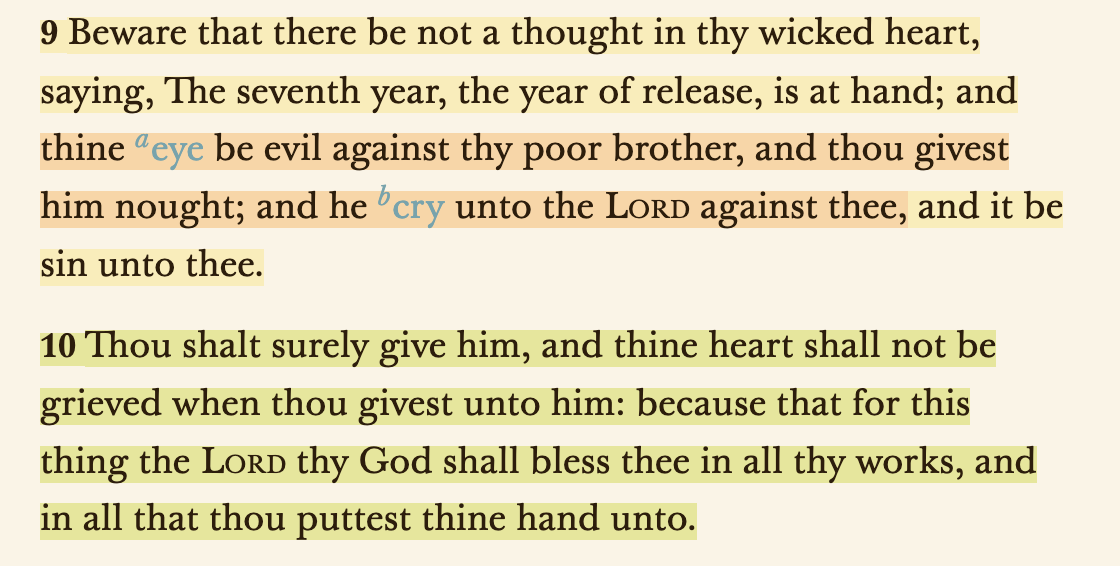Last week I posted about some initial ideas I had for how to teach my upcoming lesson on the Book of Deuteronomy. I've settled on the theme of animal altriusm (when animals help out others), and now I need to turn this into a lesson plan.
If you'd like to jump straight to the final lesson plan, click here. If you'd like to see how I got to it, read on...
Photo by Cosmic Timetraveler on Unsplash
The link here is Deuteronomy 15:10, when Moses is preaching to the Israelites, and he relates Heavenly Father's instructions that the people are to help others with an open heart.
In my previous post, I thought that I could draw a parallel between this message from HF and animal altruism. I was curious about what was known about animal altriusm. It seems that there are several types:
- Animals may be programmed to help others, even when it means they are at a biological disadvantage when it comes to their own reproductive potential. This is described as biological altruism. Examples include worker insects (e.g. bees, ants) who will work hard to further the reproductive prospects of the queen, even if it kills them.
- Animals may help others in their own community group, since doing so will increase the chances of the others helping them out in the future. This is reciprocal altruism. Examples include vampire bats who will share some of the food they gather with other bats who haven't been as fortunate at finding food.
- Some animals genuinely go out of their way to help others, including animals in other species. This isn't well understood, and seems closest to the human form of altruism where we will help complete strangers, with no expectation of personal benefit.
- Turtles help flip over an upside-down turtle (YouTube)
- Tiger stops leopard attacking zookeeper (YouTube)
- Cat stops toddler from opening oven (first clip in this YouTube)
- Elephants save baby elephant - first clip in this YouTube, followed by:
- Mother zebra saves baby from lion
- Bear saves crow from water
- Lab saves another dog from waterfall
- Polar bear mum saves pup from water
- Dog wets beached fish gills
- Buffalo flips turtle
- Hippos save wildebeast from crocs
- Pig saves baby goat from drowning
- Mummy monkey saves baby from electric lines
- Another YouTube collection, featuring:
- Bear saves crow from drowning
- Pig saves baby goat from drowning
- Orangutan saves baby chick
- Baboon saves impala from leopard
- Hippo saves zebra from croc
- Lioness saves baby calf
- Monkey rescuscitating another who was electrocuted on railway track (Guardian article)
The red quote could be used as the basis of the knockout experiment, where we read it out of context (without the yellow parts) and ask the children to think about how they would react to various events if they were asked to do this ("be evil against thy poor brother, and ... givest him nought"). We can then use the green part to ask them how they'd react to the same events if they follow these positive instructions (where they're asked to give freely and from the heart).
- Your sibling is sad because someone was mean to them.
- You keep beating your younger sibling at a video game.
- You see a cat who’s leg is trapped in a fence.
- You see an advert for kids who are starving, asking for donations.
- You fell and had a bad cut.
- You couldn’t get to church.
- You couldn’t figure out your maths homework.
- Your parents are sick, there's no food in the house and you haven't had anything to eat all day.
Lesson Check List
- What is the spiritual theme?
- Being nice to each other, as HF commanded.
- What is the science topic?
- Animals are nice to each other, similar to humans
- There are different mechanisms of this. We thought animals were different, programmed for their own gain, but now we think they’re capable of being purely altruistic like us.
- There is some evidence for hormones that encourage us to be nice, and think of others. Scientists have shown that removing oxytocin in animals makes them meaner to each other.
- How does the science illustrate the spiritual theme?
- HF wishes us all to care for others.
- We can use a knockout thought experiment to see what could happen if we didn't care for others. We reverse the commandment from HF, and examine what would happen if we weren’t nice to each other, vs if we were.
- What will make it fun?
- Watching the animal altruism videos will be interesting, and perhaps we could rank them like a talent competition.
- We could do the thought experiment as a game.
Lesson Plan
- Print outs of the score sheet below (1 per child).
- Something to show the YouTube video below on.
- Some pieces of paper that you can write various events from (see below).
- Introduce the topic.
- Deuteronomy is a book in the OT where Moses preaches to the Israelites during their search for the Promised Land.
- Within it, he relates HF's desire for us to help others with an open heart.
- We see animals helping each other out.
- Show clips (here's a YouTube playlist I made just for the lesson), and have the kids score them out of 10 in terms of how selfless they are. Here's the judging sheet.
- Explain that scientists can make changes to animals to remove a key hormone, oxytocin, which controls how nice animals are to each other. When they do this, the animals become meaner to each other.
- Do our own experiment where we first read the red verse from Deuteronomy 15:9 (see screenshot below) and then review the questions earlier about what we would do, or others would do, in specific events, if we followed these instructions to be "evil" to each other.
- The events could be drawn randomly from a bag. They can include events where they see someone in need:
- Your sibling is sad because someone was mean to them.
- You keep beating your younger sibling at a video game.
- You see a cat who’s leg is trapped in a fence.
- You see an advert for kids who are starving, asking for donations.
And also events where the child themselves is in need:- You fell and had a bad cut.
- You couldn’t get to church.
- You couldn’t figure out your maths homework.
- Your parents are sick, there's no food in the house and you haven't had anything to eat all day.
- Examine the long term implications of this instruction. (e.g. if people didn't help others who were hurt, who would want to be a doctor? Who would help people in hospitals?)
- Repeat the experiment after reading the green verse (all of Deuteronomy 15:10) in the screenshot above, and discussing how we would act then.
- Talk about how important it is for us to follow this commandment, otherwise bad things would happen to society.
- Finish with a word puzzle:
- What animal word exists in ALTRUISM? (rat)
- What about DEUTERONOMY? (rodent, emu, doe)
- Finally, what animal can you get if you replace an S in MOSES with a U? (mouse)
- Closing prayer.




Comments
Post a Comment